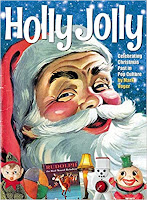Stanley Kubrick is one of the most recognizable and revered film directors and arguably the one who most effectively and indelibly smuggled big ideas and experimental storytelling into mainstream cinemas. However, a close look at his career reveals that Kubrick put a lot more of himself into producing than directing. Over the final three decades of his career, he directed only five films, but he was constantly busy with distribution, marketing, home video releases, dubbing for foreign markets, etc. And he lavished all the attention on this unglamorous stuff that he expended on his directing. Ultimately, his obsession with every facet of production so consumed his time that he could direct only one picture in the final twelve years of his life.
I'm a major Kubrick fan, and I've read several books about him, but I didn't quite grasp why his career was as odd as it was until reading James Fenwick's Stanley Kubrick Produces. Bolstered with a tremendous amount of research in the Stanley Kubrick Archives at the University of the Arts London, Fenwick highlights how dedicated Kubrick was to maintaining control of his work from the very beginning of his career. It began with media spin in the days when he wanted to project the idea that he had more control than he really did and he tended to bungle his productions. He made the ultimate blunder when he and partner James B. Harris signed a contract with Kirk Douglas's production company that gave the actor far more say than it gave Kubrick.
The interesting takeaway from Stanley Kubrick Produces that Fenwick doesn't overemphasize is that Kubrick's obsession with control was often about creating and presenting his work as well as he possibly could. It may seem crazy for a producer to get involved in how his movies are dubbed for foreign markets, which is a task usually farmed out to companies that specialize in that kind of work. However, anyone who has ever seen a film dubbed with flat, unengaged voices knows how integral voice acting is to the effectiveness of a film. Kubrick was rightly offended by attempts to market Paths of Glory as a blood and guts war movie or 2001: A Space Odyssey as pulp sci-fi and one can understand why an artist of his caliber would want to get involved in that side of the business for the sake of how the world approached his art. While the many mistakes documented in Stanley Kubrick Produces expose Kubrick as not as infallible as some fans consider him to be, and his attempts to subvert labor union rules were downright immoral, the infamous obsessiveness it also documents only highlights how complete his artistry was.


















































